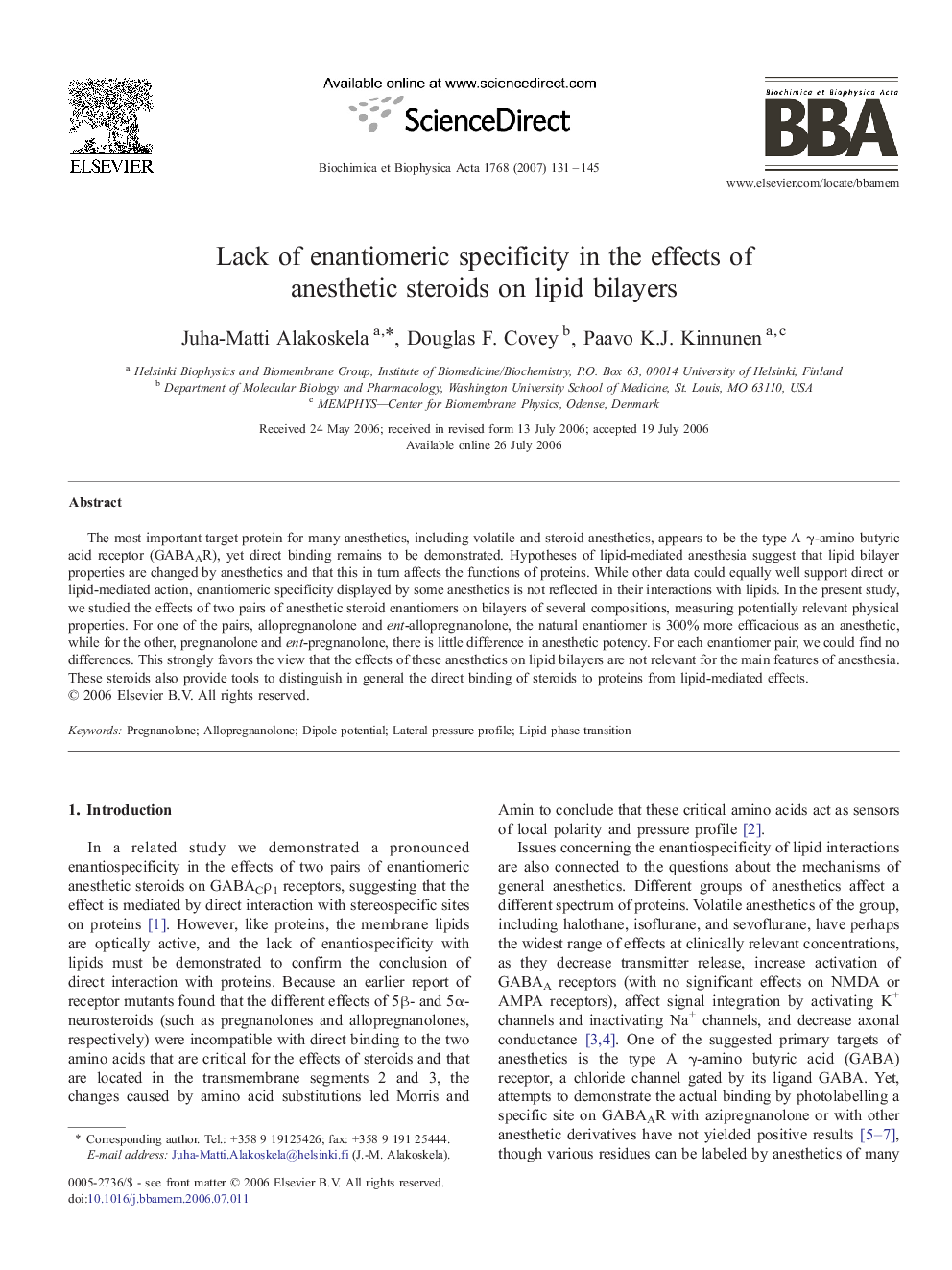| Article ID | Journal | Published Year | Pages | File Type |
|---|---|---|---|---|
| 1945934 | Biochimica et Biophysica Acta (BBA) - Biomembranes | 2007 | 15 Pages |
The most important target protein for many anesthetics, including volatile and steroid anesthetics, appears to be the type A γ-amino butyric acid receptor (GABAAR), yet direct binding remains to be demonstrated. Hypotheses of lipid-mediated anesthesia suggest that lipid bilayer properties are changed by anesthetics and that this in turn affects the functions of proteins. While other data could equally well support direct or lipid-mediated action, enantiomeric specificity displayed by some anesthetics is not reflected in their interactions with lipids. In the present study, we studied the effects of two pairs of anesthetic steroid enantiomers on bilayers of several compositions, measuring potentially relevant physical properties. For one of the pairs, allopregnanolone and ent-allopregnanolone, the natural enantiomer is 300% more efficacious as an anesthetic, while for the other, pregnanolone and ent-pregnanolone, there is little difference in anesthetic potency. For each enantiomer pair, we could find no differences. This strongly favors the view that the effects of these anesthetics on lipid bilayers are not relevant for the main features of anesthesia. These steroids also provide tools to distinguish in general the direct binding of steroids to proteins from lipid-mediated effects.
